Tips for Creating Fashion Portfolio for a Job Interview
Showcasing portfolios to get a dream job in the fashion industry is not a new concept. But there might be a lot of questions that pop up into your mind when you think of creating your portfolio...
Things we cover today- What is a Portfolio?
- Types of Fashion Portfolios
- How to create a Portfolio?
- Order in a Portfolio
- Tips to make a Portfolio better
- What do companies search for?
- Benefits of creating a Portfolio
- How to get noticed online?
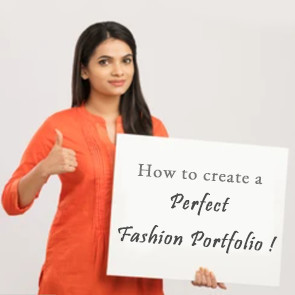
- How lengthy can be my Portfolio?
- How many design collections should I include?
- What format should I choose? Digital or Tangible?
What is a Fashion Portfolio?
It does not matter, weather you have recently completed your Fashion Designing Course or you have already been working, a great fashion portfolio can take your fashion career to the next level. A portfolio is an essential tool which demonstrates what you are capable of and why a company should hire you. Portfolio is a vital element when it comes to marketing yourself. It also helps to convince potential recruiters by making them believe that you are the appropriate candidate fit for their job role.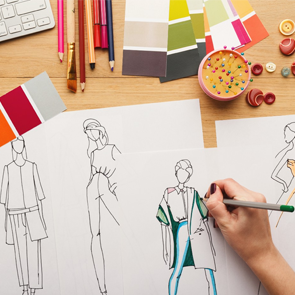
Types of Fashion Portfolios
A splendid portfolio would leave an everlasting impression on the recruiters which would definitely help you get shortlisted for a job interview. Let's first dig into different types of portfolio's. - Personal Portfolio:A personal portfolio includes all the design collections, you think are best in your entire experience as a Fashion Designer. This is the portfolio you carry for a job interview which exhibits all the skills you are exceptionally good at. Here you reveal all the categories you have specialized like Bridal Wear, Designer Wear, Party Wear, Swimwear, Casuals, Active wear etc...
- Specific Portfolio:It is prepared for a recruiter while applying for a particular job role. A specific portfolio is the one that a firm / recruiter might require after your first communication with them. In this type of portfolio, you should exhibit your best design collections that reflects the specific job role you have applied for. For example, if you are looking forward for a specific Job Role, make sure you include necessary segments in your portfolio such as:-
- Fast FashionTechnical Drawings of any one complicated product such as Trousers or a Coat.
- Head DesignerAs a Design Head you should focus on presenting your capabilities of managing a team. For this kind of job role, your portfolio should include your team's final design collection with photoshoot and pictures from the ramp.
- Bridal DesignerAdd all your best design collections within the Bridal Theme with detailed specifications and fabric swatches.
-
The Beginning - Where to start?
Portfolio is something that not only displays your work but also conveys your Creativity and Personality. So, before you start brainstorming your ideas, sit back and try to Sort out these Questions
- What are my strengths?
- What inspires me?
- How can I express my passion?
- What would impress the recruiter?
- What should it contain?
- What should you pay attention to?
Going Step by Step
- Decide the formatFirst, finalize which format you want to go for? (Digital or Physical Book). If you have decided to go for a tangible book, you also have to finalize how you are going to bind it? Standard hard binding, accordion, loose sheets or being creative by hand tagging it are few options.
- Decide the SizeIt is completely your choice as there is no standard size for a portfolio. You can choose any size such as A3, A4, A5 or it can be of any shape such as rectangle or square.
- Digital Print or being ArtisticBeing Artistic is more eye-catching over digitally printed ones. You can use your creative skills to attain various effects using sand, flower, texture, fabric, wood etc. The most important point is to make it unique.
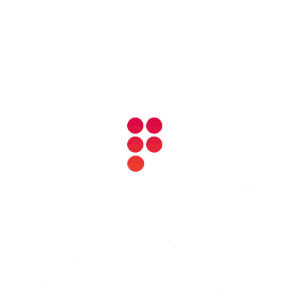
- Exploring IdeasNow comes, the time to finalize a unique idea by exploring various destinations.
- Analyzing & Conceptualizing the StorylineTry to connect your idea and your prototype design based on the facts you have explored. Create a brief story line to make the viewer curious about your collection.
- Grabbing HandsOnce you have finalized with your idea, perform research for different materials, colors, fabric designs etc. Collect all the required materials such as color samples, sketches, fabric swatches, photos etc with reference to your design.

- Framing Mood BoardAnalyzing other portfolios helps us to get an idea about how to effectively organize our material. Now grab Scissors & Glue and create a beautiful collage with things you have gathered. You can also add physical items such as dried flowers, beads, yarns and shells. This helps to fill in the whole picture of your design inspiration, especially as it applies to textures.
- Technical SketchesFor your portfolio to look more professional, include detailed technical sketches / techincal pack snippets to demonstrate that you have the clear idea of how the specification of the final garment would be. Add a few samples of construction, close-up sketches of embellishments, or artwork placement specs. Neatly arrange your fabric swatches with same sized and unfrayed edges.
- Prototype DesignFew fashion illustrations (hand drawn or with the help of a digital software) could sum up things in a marvelous way. Also include the detailed color code used in your design.
- Capturing your Designs to FramesFor a photoshoot, get pictures from all angles including close-up shots to highlight all relevant details.
- I'm HereHey, you are almost done. So what next...? End the portfolio with a stunning end-cover with your contact information. Do not let the recruiters, flip through the entire portfolio to get your contact details.
Sequential Order of a Fashion Designer's Portfolio
- Cover Page - Grab Everyone's AttentionBe innovative and make all eyes stare at a beautiful & creative Cover Page. An attractive Front Cover should provide a glimpse of what lies inside which would definitely increase the curiosity of the viewer to open and look inside. Put in those striking colors with innovative designs and always remember to keep it unique...
- Index PageRemember to use your creativity in the entire portfolio even in the index page, but do not make it too crowded.
- I, Me & MyselfAn up to date bio-data is a quick path to gain attention. Start with a brief introduction about yourself, but make sure you do not stretch it too long. The best way is to keep it short and simple, may be a maximum of 5 to 8 lines. If you are preparing your personal portfolio include details about yourself as a designer. Focus on highlighting all your achievements, experiences, seminars attended etc, which would be an added advantage. Providing reference of a faculty of your Fashion Institute is always better.
- Brief Intro about your DesignsThis section explains the objective, inspiration and the reason behind your design collections. It explains how your brain works, the visual research you have done and how you conceptualize your ideas into designs. Your introduction should be very specific of what the reader can find inside.
- Mood Board - The Story LineMood Boards are essential to explain the motivation behind your collections. It helps firms & recruiters to understand how your brain works and how innovative you are with those ideas. Adding images, fabric swatches, sketches, colours and textile palettes would be the best way to go for. One or two pages would be ideal for a mood board. A great mood board can be created by combining beautiful fabric swatches and color palettes. Mood Board is the key element which demonstrates that you have dedicated enough time for research and that you have a clear picture of what you are talking about.
- Technical SketchesConsider to include this segment with respect to the job role / company you are applying. You can either use a software like Adobe InDesign / Illustrator or it can also be hand drawn. Adding designs of extremely complicated products like Blazers, Trousers or including fine elements like fashion accessories can add a charm to your technical perspective. Firms which rely on fast fashion business would prefer to see accurate designs which can also be used to prepare prototype samples. Good technical sketches demonstrate that you are capable of conceptualizing new ideas into designs. Finally, do not forget to pen down short write-ups explaining the concept behind each design.
- Prototype Designs (Optional)In this section, you mould your ideas to visual representation by drawing the final look either by hand or an Illustrator. Use high quality drawings and photos of final collection. Use hand drawn silhouettes to demonstrate how your ideas look when styled with other garments. You can use inspirational images to bring the entire look and feel for your designs. Recruiters will be judging you based on these ideas whether your patterns are apt for their job role. You can also include the picture of accessories which would go perfect with it.
- PhotoshootConsider a photoshoot with models wearing your final collection rather than displaying it over a mannequin. Images with your collection over a mannequin does not feel professional.
- End PageComplete your portfolio with a really beautiful end page which ends up the whole story. Make sure this page leaves a really good impression on the viewers and they have something to remember.
Few Tips to make a Perfect Portfolio
- First ImpressionAlways remember the old proverb - "The First Impression is the Best Impression", so begin with the design collection that would express about you as a creative individual. Make sure your portfolio showcases your thoughts, perception and creativity.
- Stack it RightThe first and the most important aspect which comes in a Portfolio is the order of presentation. Your first preference should be to logically organise your portfolio by projects. Find out two of your best collections. Place best collection at first and second best collection towards the end. This way you start with your best foot forward and end with a good impression.
- Keep it HandyThe most common question when it comes to Portfolio preparation, most people ask "How long could it be?". There isn't a specific length as such. But make sure you do not clutter it too much. A potential employer is not impressed with outdated work. The most important thing to keep in mind is to add your best work and the most recent design. Sit back and get feedback from your friends and relatives about your work and include those which are appreciated by most.
- Tangible v/s Digital PortfoliosOther frequently asked question about portfolio by many fashion aspirants is that "Which format should I create?". Many of us think that a hand held book as a portfolio is quite outdated, so it is better to go for a digital one. Recruiters always prefer your offline portfolio when you walk in for an interview. Infact, a digital one is more portable and could be beneficial while you apply online for a job.
- Stay with the Latest TrendRecruiters are always in search of latest and trendy designs. Employers are looking forward for innovative designs which can be appealing for new consumers and could steal the market. Do not bore them with old outdated designs.
- Grab it TightYour portfolio is the greatest asset in your fashion career. You have spent many years to acquire the skills necessary to become a fashion designer. A reputed firm would always respect your work and would never ask to keep your portfolio with them. In case, the recruiter demands for your portfolio, you can tell them that you would send the digital version of it.
- Blank SpaceBlank spaces in a portfolio are not very impressive. Try to minimise the blank spaces or you could fill them with small designs.
- The X Factor (Surprise Element)Don't reveal your work completely. Always try to add a suspense element and make the viewer more curious about certain things.
- Rework, Rework & ReworkGive maximum effort and provide attention to the minute details. In case of printed portfolios, take care of the quality of printing.
What do Companies / Recruiters search in your Portfolio?
Before we start creating a portfolio, you should clearly understand what recruiters are in search of. Few things that companies and firms look for are listed below.- Are your Designs unique?
- How commercially successful your designs will be?
- Originality in your Designs?
- Your detailed Bio-data
Benefits of Creating a Fashion Portfolio
- Impress Potential Recruiters and Companies
- It acts as a Virtual Calling Card
- Digital Portfolio boosts your online presence
- Fashion Portfolio is considered as an Expressive Resume
How to get noticed Online?
A portfolio's ultimate aim is to show off what you are specialized in. A company / employer will evaluate your portfolio on the basis of quality, aesthetics, professionalism and completeness. There are a lot of online portals where you get the opportunity to introduce yourself through your work, skills and ideas. The professional portals which can enhance your online presence are: So, now the question which remains is Are you done with a perfect Portfolio?The answer to this question is very simple. No, a Fashion Portfolio is never static. You should keep on updating it with the latest works to replace old one's.
| Published On | - | 2021-09-23 |
| Modified On | - | 2021-09-23 |
| Author | - | Team WIFD |
| Publisher | - | Waves Fashion Institute |
| https://wifd.in//how_to_create_a_fashion_design_portfolio_for_a_job_interview | ||
Please leave your comments, we love it..!
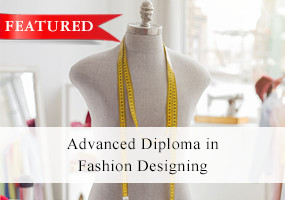
Want to make waves in the fashion industry? Our job-oriented course offers practical training, fashion seminars, and lucrative job placements. Enroll now and become a fashion maven!
view Advanced Diploma course

Our Fashion Design Diploma can help you improve your sense of style. Learn about Surface embellishment, Textile science & History of fashion. Gain practical knowledge & open doors to the fashion industry.
view Diploma course
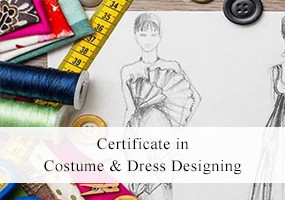
Short on time but big on aspirations? Our practical-oriented costume and dress designing course is perfect for working professionals. Get hands-on training, convenient timing, and unleash your design potential in just 6 months!
view Certificate course
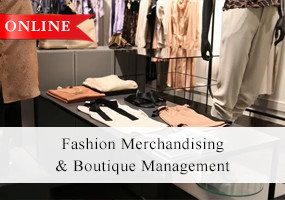
Ready to fast-track your career in Fashion Merchandising and Boutique Management? Our 2-month certificate course provides in-depth learning, costing analysis, and a sales perspective. Enroll now and become a retail success story!
view Certificate course

Unique Outfits of Urfi Javed you must see
Discover Urfi Javed's ingenious fashion flair with a dress crafted from wooden cloth hanging clips, one of her many unique outfits...
Discover Urfi Javed's ingenious fashion flair with a dress crafted from wooden cloth hanging clips, one of her many unique outfits...
View Story
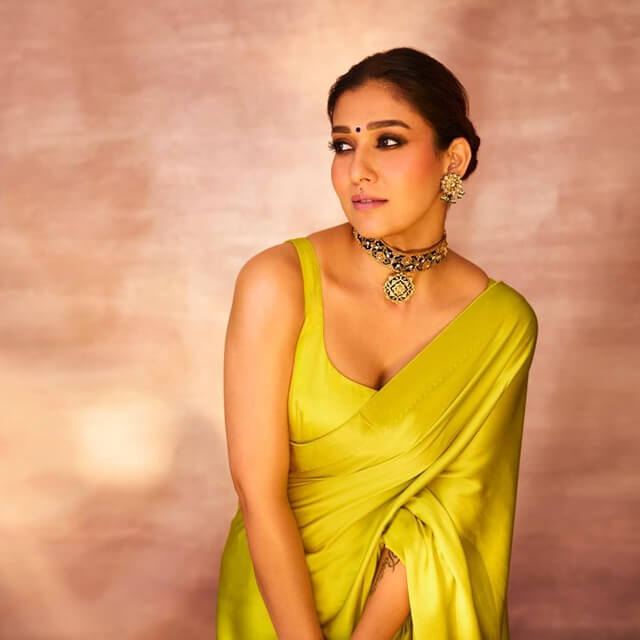
Nayanthara Citrine Saree Glamour
Discover Nayanthara's stunning look at the Dadasaheb Phalke Award Ceremony wearing citrine yellow silk saree from Ekaya Banaras steals the spotlight.
Discover Nayanthara's stunning look at the Dadasaheb Phalke Award Ceremony wearing citrine yellow silk saree from Ekaya Banaras steals the spotlight.
View Story

Kajal Aggarwal Dazzles in Angelic Snow White Outfit
Kajal Aggarwal captivates in a snow white outfit by Pankaj & Nidhi, creating an ethereal and elegant appearance.
Kajal Aggarwal captivates in a snow white outfit by Pankaj & Nidhi, creating an ethereal and elegant appearance.
View Story

Divya Khossla slays in a Dark Maroon Anarkali Suit
Divya Khossla stuns in a dark maroon anarkali suit with golden accents, styled for the premiere of the Heeramandi series.
Divya Khossla stuns in a dark maroon anarkali suit with golden accents, styled for the premiere of the Heeramandi series.
View Story
Hey, we have more amazing content on the latest Fashion, Trends, Paintings & Creative Arts, and now it's absolutely FREE for you. All you have to do, is just... We always respect your privacy!
Popular Fashion Quotes
" Fashion is what you're offered four times a year by designers. And style is what you choose " ~ Lauren Hutton


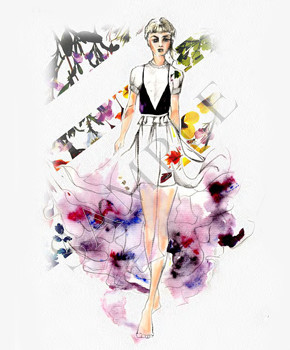
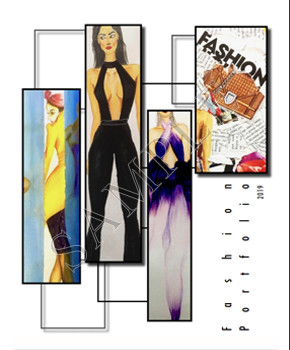











 Color & Design inspired from Red-bellied Black Snake
Color & Design inspired from Red-bellied Black Snake  Color Board created from the colors of the Snake
Color Board created from the colors of the Snake  Final output from the inspiration
Final output from the inspiration  Mood Board inspired from Bathroom Tile Colors
Mood Board inspired from Bathroom Tile Colors  Mood Board inspired from Bubble Gum
Mood Board inspired from Bubble Gum  Mood Board inspired from Flowers & Dried Leaves
Mood Board inspired from Flowers & Dried Leaves  Mood Board inspired from Lavender
Mood Board inspired from Lavender  Mood Board inspired from Furniture, Table Lamp & Curtains
Mood Board inspired from Furniture, Table Lamp & Curtains  Mood Board inspired from Rust & Pink Color
Mood Board inspired from Rust & Pink Color  Mood Board inspired from Sand
Mood Board inspired from Sand  Mood Board inspired from Wall & Carpets
Mood Board inspired from Wall & Carpets 



















